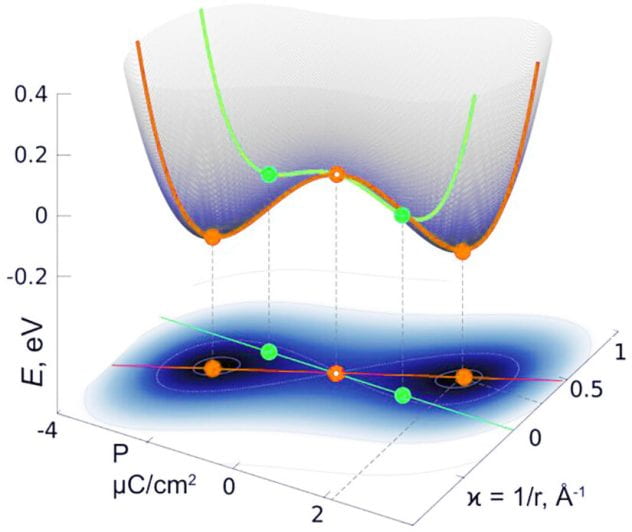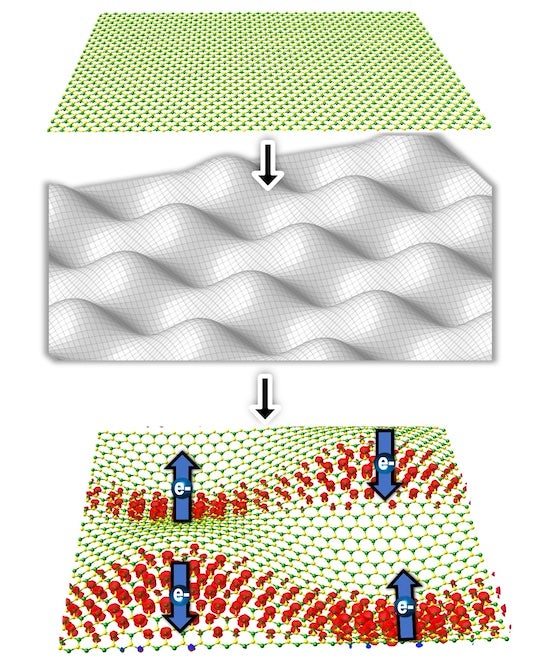
Representation of electron spins in a bent 2D material exhibiting the persistent spin helix structure. (Image courtesy of Sunny Gupta)
Wrinkles can be an asset — especially for next-generation electronics. Rice University scientists have discovered that tiny creases in two-dimensional materials can control electrons’ spin with record precision, opening the path to ultracompact, energy-efficient electronic devices.
If most devices today use the charge of electrons flowing through silicon to process and encode information, future computing may instead harness spin — a quantum property of electrons that takes on either an “up” or “down” value. Computing with spin could overcome the limitations of current silicon-based technology, reducing the energy footprint of devices and data centers at a moment when computing-driven energy use is soaring globally.
However, spintronics has to contend with a major challenge: Information encoded in spin is quick to decay and can be lost when the electrons in a material scatter and collide with atoms.
In a new study published in the journal Matter, Rice materials scientists have reported that bending atomically thin layers of materials like molybdenum ditelluride, MoTe2, gives rise to a unique spin texture called persistent spin helix, or PSH, which can preserve spin state even in scattering collisions.
– See more at Rice News





 contoured substrates
contoured substrates It’s now possible to quickly make ultrathin nanoribbons of
It’s now possible to quickly make ultrathin nanoribbons of 